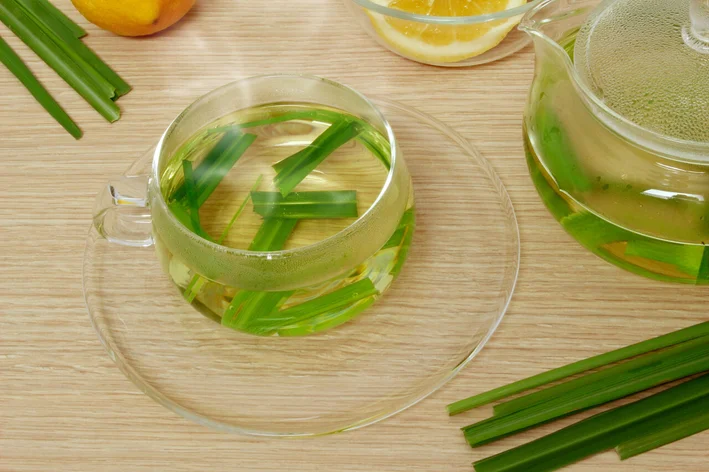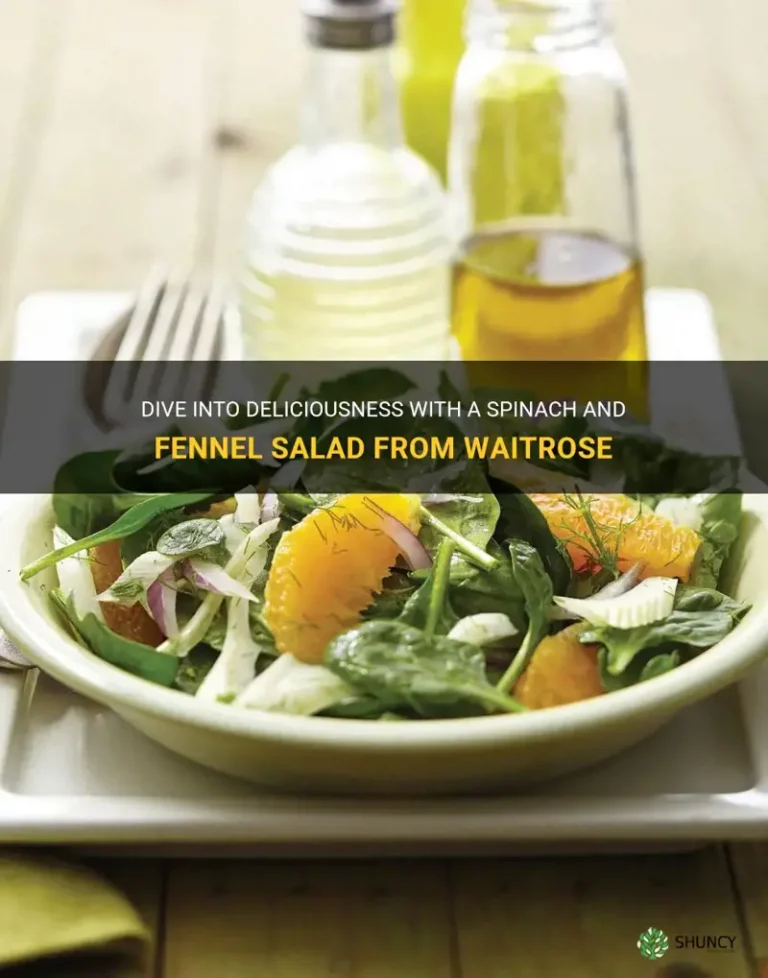From Chickpeas to Navy Beans: The Timeless Tale of Legumes, Nutrition, and Culinary Alchemy
In the grand tapestry of human sustenance, certain threads are so fundamental, so deeply interwoven into our collective history, that their significance often recedes into the background of the everyday. Among these are the legumes – the humble, yet profoundly powerful, members of the Fabaceae family. More than mere pantry staples, legumes are ancient architects of diet, silent witnesses to civilizations rising and falling, and today, increasingly recognized as vanguard players in the future of sustainable, nutritious eating. Their story is one of resilience, transformation, and an almost magical ability to nourish, delight, and adapt, moving from the fields of antiquity to the sophisticated plates of the modern connoisseur.
This is not merely a guide to cooking beans; it is an invitation to journey through their rich past, unravel their complex nutritional profile, and master the techniques that unlock their boundless culinary potential. We will delve into the particular brilliance of two exemplars – the versatile chickpea and the comforting navy bean – while acknowledging the vast, vibrant family they belong to. For the knowledgeable palate, the discerning cook, and the curious mind, the narrative of legumes is an enduring epic of flavor, health, and a profound connection to the earth.
A Deep Dive into Legume Lore: Ancient Roots and Global Reigns
The story of legumes begins not in a modern kitchen, but in the cradle of civilization, millennia ago. Archaeological evidence traces the domestication of various bean species back over 10,000 years in regions as diverse as the Fertile Crescent, Mesoamerica, and the Andes. Lentils and chickpeas were cultivated alongside wheat and barley in the Near East, forming the bedrock of early agricultural societies. In the Americas, beans, squash, and corn formed the "Three Sisters" – an ingenious polyculture system that provided balanced nutrition and ecological synergy.
From these ancient origins, legumes embarked on a global odyssey. Roman legions marched with dried peas and beans, a portable and potent source of energy. Medieval European peasants relied on fava beans and split peas as critical protein sources, often referred to as "the poor man’s meat" – a moniker that, while acknowledging their economic accessibility, often undersold their nutritional prowess. With the Columbian Exchange, indigenous American beans – kidney, black, pinto, and navy beans – traveled eastward, revolutionizing European and African diets, while Old World legumes like chickpeas and lentils journeyed west, enriching the culinary landscapes of the Americas.
This cross-pollination of crops wasn’t just an exchange of foodstuffs; it was a profound cultural phenomenon. Legumes became embedded in ritual, folklore, and national identity. Think of the black-eyed peas of the American South, symbolizing luck and prosperity on New Year’s Day; the hearty cassoulet of France, a slow-cooked symphony of white beans and meats; the ubiquitous dal of the Indian subcontinent, an everyday staple that varies in flavor and texture across thousands of miles; or the foundational hummus and falafel of the Middle East, dishes that have transcended borders to become global culinary icons. The narrative of legumes is thus inextricably linked to human migration, innovation, and the perennial quest for sustenance and flavor.
For centuries, legumes were simply known to be good. Modern science, however, has peeled back the layers to reveal precisely why these humble seeds hold such extraordinary power.
The Nutritional Powerhouse Unpacked: Why Legumes Are More Than Just "Good for You"
To call legumes "nutritious" is akin to calling the ocean "damp." It’s an understatement that barely scratches the surface of their intricate biochemical brilliance. For the knowledgeable individual, understanding the specific mechanisms behind their health benefits transforms appreciation into conviction.
Macronutrient Mastery:
-
Protein Prowess: Legumes are renowned for their high protein content, making them an indispensable component of vegetarian and vegan diets, and a superb complement to omnivorous ones. While often considered "incomplete" proteins because they typically lack sufficient methionine (though some, like soy, are complete), this is a largely outdated concern. The concept of "protein complementarity" – combining legumes with grains (like rice and beans) over the course of a day – ensures all essential amino acids are consumed. Moreover, the quality of legume protein is exceptionally high, providing the building blocks for muscle repair, enzyme production, and countless bodily functions without the saturated fat often associated with animal proteins.
-
Complex Carbohydrate Champions: Unlike refined carbohydrates that cause rapid spikes in blood sugar, legumes are rich in complex carbohydrates. These are digested slowly, providing a sustained release of energy that prevents energy crashes and promotes satiety. This slow digestion is attributed to their high fiber content and unique starch structure, making them allies in managing blood sugar levels and preventing type 2 diabetes.
-
Fiber Fortresses: This is where legumes truly shine, offering both soluble and insoluble fiber in generous quantities.
- Soluble fiber forms a gel-like substance in the digestive tract, which helps lower LDL ("bad") cholesterol by binding to bile acids and facilitating their excretion. It also slows glucose absorption, further aiding blood sugar control. Crucially, soluble fiber acts as a prebiotic, nourishing beneficial gut bacteria.
- Insoluble fiber adds bulk to stool, promoting regular bowel movements and preventing constipation. It’s a key player in maintaining colon health and may reduce the risk of diverticulosis and certain cancers.
Micronutrient Marvels:
Beyond the macros, legumes are veritable treasure chests of essential vitamins and minerals:
- Iron: A critical component of hemoglobin, vital for oxygen transport. While plant-based "non-heme" iron is less bioavailable than "heme" iron from animal sources, consuming legumes with Vitamin C-rich foods (e.g., tomatoes, bell peppers) significantly enhances absorption.
- Zinc: Essential for immune function, wound healing, and DNA synthesis.
- Magnesium: Involved in over 300 enzymatic reactions, supporting muscle and nerve function, blood glucose control, and blood pressure regulation.
- Folate (Vitamin B9): Crucial for cell division and DNA formation, particularly important during pregnancy to prevent neural tube defects.
- Potassium: An electrolyte vital for maintaining fluid balance, nerve signals, and muscle contractions, and known to help regulate blood pressure.
- Other B Vitamins: Thiamine, riboflavin, niacin, and B6, all contributing to energy metabolism and overall cellular health.
Addressing the "Gassy" Elephant in the Room:
For many, the primary deterrent to consuming more legumes is the perception of digestive discomfort, often attributed to "gassiness." This phenomenon is due to oligosaccharides – complex sugars like raffinose and stachyose – that humans lack the enzyme (alpha-galactosidase) to digest. These sugars travel undigested to the large intestine, where gut bacteria ferment them, producing gas.
However, the knowledgeable cook understands that this can be largely mitigated. Proper soaking and cooking techniques, which we will explore, significantly reduce oligosaccharide content. Furthermore, regular consumption builds up the beneficial gut bacteria capable of breaking down these compounds, making legumes progressively easier to digest over time. The benefits far outweigh this minor, manageable inconvenience.
The Art and Science of Preparation: From Dry to Delicious
The transformation of a dry, hard bean into a creamy, flavorful morsel is a culinary alchemy rooted in both tradition and scientific understanding. Mastering this process is key to fully appreciating legumes.
Buying and Storage: The Foundation of Flavor
Always seek out dry beans that are uniform in color, free from excessive dust or debris, and show no signs of insect damage. While dry beans have an impressively long shelf life, they are not immortal. Over time, they can become excessively dry and stubborn to cook, taking longer to soften. Aim to use beans within 1-2 years for optimal results. Store them in airtight containers in a cool, dark pantry to protect them from moisture, light, and pests.
The Soaking Saga: A Necessary Prelude
Soaking is the first crucial step in the journey from dry to tender. Its purposes are manifold:
- Hydration: It rehydrates the beans, significantly reducing cooking time.
- Digestibility: As mentioned, soaking helps leach out some of the indigestible oligosaccharides, making the beans easier on the digestive system.
- Even Cooking: Hydrated beans cook more uniformly, resulting in a better texture.
There are two primary soaking methods:
- Overnight Cold Soak: This is the classic method. Rinse the beans thoroughly, then place them in a large bowl and cover with cold water, ensuring at least 3-4 inches of water above the beans, as they will expand considerably. Let them soak for 8-12 hours, or overnight. Drain and rinse thoroughly before cooking.
- Hot Soak (Quick Soak): For those pressed for time, the hot soak is an excellent alternative. Rinse beans, place in a pot, cover with water (again, 3-4 inches above), and bring to a rolling boil for 2-3 minutes. Remove from heat, cover, and let stand for 1 hour. Drain and rinse. This method achieves similar results in a fraction of the time.
A common misconception is that soaking "leaches nutrients." While some water-soluble vitamins may dissolve into the soaking water, the losses are negligible compared to the benefits of improved digestibility and texture. Always discard the soaking water and cook in fresh water.
Cooking Methods: The Alchemy of Heat and Time
Once soaked, the beans are ready for their final transformation. The choice of cooking method depends on desired texture, time constraints, and the specific dish.
-
Stovetop (The Classic Simmer): This is the most common method, offering precise control over the cooking process.
- Process: Place soaked and rinsed beans in a heavy-bottomed pot. Cover with fresh cold water by at least 2 inches. Add aromatics (bay leaves, garlic, onion halves) if desired, but hold the salt. Salt added too early can toughen the skins, particularly for older beans.
- Heat: Bring to a boil, then immediately reduce heat to a gentle simmer. Skim off any foam that rises to the surface.
- Time: Cooking times vary widely depending on the type and age of the bean, typically ranging from 45 minutes to 2 hours. Chickpeas usually take 1-1.5 hours, while navy beans might be 45-75 minutes.
- Doneness: Taste frequently. Beans are done when they are tender throughout, creamy, and easily mashable between your fingers, but not falling apart.
- Salting: Once tender, season generously with salt. This is crucial for flavor development. Continue to simmer for another 15-20 minutes after salting to allow the flavor to penetrate.
- Liquid: The cooking liquid, rich in flavor and nutrients, can be used in the final dish or reserved for stocks and sauces.
-
Pressure Cooker (Speed and Efficiency): A favorite for many chefs and home cooks, the pressure cooker dramatically reduces cooking time and often yields exceptionally creamy beans.
- Process: Place soaked (or sometimes unsoaked, depending on the bean and recipe – though soaking is generally recommended) beans in the pressure cooker. Cover with fresh water. Add aromatics.
- Time: Cooking times are significantly shorter, often 15-25 minutes for soaked beans, and 30-45 minutes for unsoaked, followed by natural pressure release.
- Benefits: The high-pressure environment tenderizes beans quickly and uniformly.
- Caution: Always follow manufacturer’s instructions for your specific pressure cooker. Ensure you don’t overfill.
-
Slow Cooker (Hands-Off Gentleness): Ideal for dishes like baked beans or chilis where a long, slow cook is desired.
- Process: Combine soaked beans, liquid, and other ingredients.
- Time: Typically 4-8 hours on high or 6-10 hours on low, depending on the bean.
- Consideration: Slow cookers don’t reach temperatures high enough to neutralize phytohaemagglutinin in kidney beans, so these must be boiled vigorously for at least 10 minutes before being transferred to a slow cooker. For other beans, a brief boil isn’t strictly necessary if starting from dry, but some prefer to boil and then transfer for consistency.
The Canned Conundrum: Convenience vs. Control
Canned beans offer unparalleled convenience – simply open, rinse, and use. They are pre-cooked and ready to go, making them excellent for quick meals. However, they come with trade-offs:
- Sodium: Often high in sodium; rinsing thoroughly can reduce this by up to 40%.
- Texture: Generally softer and sometimes mushier than home-cooked beans, offering less control over the final consistency.
- Flavor: Lacking the nuanced flavor that can be developed by simmering dried beans with aromatics.
For dishes where beans are a supporting player or time is of the essence, canned beans are perfectly acceptable. For center-stage dishes like hummus, baked beans, or a hearty bean soup, starting from dry is almost always the superior choice for texture and flavor.
Spotlight on the Stars: Chickpeas and Navy Beans
While the legume family is vast, chickpeas and navy beans offer distinct nutritional profiles and culinary capabilities that make them truly standout performers.
A. The Mighty Chickpea (Garbanzo Bean): The Versatile Diplomat
Origin and History: The chickpea, Cicer arietinum, boasts a lineage stretching back over 7,500 years in the Middle East. From there, it spread to India, the Mediterranean, and North Africa, becoming a foundational element in these diverse cuisines. Its name "garbanzo" comes from Spanish, while "chickpea" is derived from the French chiche, itself from the Latin cicer.
Nutritional Highlights: Chickpeas are an exceptional source of dietary fiber (both soluble and insoluble), plant-based protein, and complex carbohydrates. They are particularly rich in folate, manganese, copper, and iron. Their unique blend of starches and proteins contributes to their low glycemic index, making them a superb food for sustained energy and blood sugar management.
Culinary Versatility: A Story of Transformation:
The chickpea’s true genius lies in its adaptability. It can be transformed into an astonishing array of textures and flavors:
- Hummus: The Silken Icon: This creamy dip, a cornerstone of Middle Eastern cuisine, exemplifies the chickpea’s ability to be utterly transformed. To achieve truly sublime hummus, start with perfectly cooked, very tender chickpeas (peeling them, though laborious, yields an unparalleled silky texture). Blend with tahini, lemon juice, garlic, and a touch of ice water for emulsification. The result is a velvety, nutty spread that transcends mere dipping.
- Falafel: The Crispy Jewel: These deep-fried fritters are a testament to the chickpea’s textural range. Made from dried, soaked (but uncooked) ground chickpeas, mixed with herbs, spices, and often a binding agent like a pinch of flour or baking soda, falafel achieve an irresistible crispy exterior and a fluffy, herbaceous interior. The uncooked beans provide a unique structure that cooked beans cannot replicate.
- Curries and Stews: The Flavor Sponge: From the robust Chana Masala of India to the aromatic tagines of Morocco, chickpeas absorb the rich, complex flavors of spices and broths, adding heartiness and body to vegetarian and meat-based dishes alike. Their slightly nutty flavor complements a vast array of spices, from cumin and coriander to turmeric and paprika.
- Roasted Chickpeas: The Addictive Crunch: A simple yet ingenious transformation. Toss cooked chickpeas with olive oil and your favorite spices (smoked paprika, chili powder, garlic powder, za’atar) and roast until golden brown and crispy. They become an addictive snack, a crunchy salad topper, or a novel crouton alternative.
- Aquafaba: The Cinderella Story: Perhaps the most surprising revelation of the chickpea’s versatility is aquafaba – the viscous liquid from cooked or canned chickpeas. This "bean water" is an astonishingly effective vegan egg substitute. It can be whipped into stiff peaks for meringues, mousses, and macarons; emulsified into mayonnaise; or used as a binder in baking. It’s a true zero-waste marvel that speaks to the hidden potential within humble ingredients.
- Salads, Wraps, and Beyond: Chickpeas add substance and protein to green salads, can be mashed for "chickpea salad" sandwiches (a vegan alternative to tuna salad), or added whole to pasta dishes for extra texture and nutrition.
B. The Humble Navy Bean (Haricot Bean): The Comforting Classic
Origin and History: The navy bean, also known as the haricot bean in Europe, traces its origins to the Americas. It was likely brought to Europe by early explorers and then returned to North America, gaining popularity in the United States, particularly due to its inclusion in the rations of the U.S. Navy in the 19th century – hence its common name.
Nutritional Highlights: Navy beans are a nutritional powerhouse, especially renowned for their exceptionally high fiber content (up to 19 grams per cup cooked), which contributes to digestive health and prolonged satiety. They are also an excellent source of plant-based protein, iron, magnesium, folate, and potassium. Their complex carbohydrates and fiber contribute to a very low glycemic index, making them a strong ally in blood sugar management and cardiovascular health.
Culinary Versatility: A Story of Comfort and Heartiness:
Navy beans are celebrated for their ability to break down slightly during cooking, creating a creamy texture that enriches broths and sauces. Their mild flavor makes them an ideal canvas for robust seasonings.
- Boston Baked Beans: The Quintessential American Comfort: This iconic dish is perhaps the most famous application of navy beans. Slow-cooked with molasses, salt pork or bacon, brown sugar, and various spices, it transforms the humble bean into a rich, sweet, and savory masterpiece. The long, gentle cooking allows the flavors to meld and the beans to become incredibly tender and luscious, coated in a thick, mahogany-colored sauce. It’s a dish steeped in history and regional identity.
- Soups and Stews: The Hearty Base: Navy beans are a natural fit for hearty soups and stews. Think of the "Senate Bean Soup," a staple in the U.S. Senate cafeteria since the early 20th century, which features ham hocks and navy beans in a simple, nourishing broth. Their ability to thicken and enrich broths, while maintaining their shape (if not overcooked), makes them perfect for minestrone, white bean chili, or a rustic vegetable stew.
- White Bean Purees: Creamy Elegance: When blended, navy beans yield a wonderfully creamy puree. This can be seasoned with olive oil, garlic, rosemary, and lemon juice to create a sophisticated side dish, a base for crostini, or a velvety accompaniment to roasted meats or vegetables. Their mild flavor allows the aromatics to shine.
- Salads: Marinated Medleys: While often associated with warm dishes, navy beans also excel in cold preparations. Marinated white bean salads, dressed with vinaigrette, fresh herbs, red onion, and bell peppers, are refreshing, protein-packed additions to any meal.
- Pâtés and Spreads: Blended with sun-dried tomatoes, herbs, and a good olive oil, navy beans can form the basis of savory vegan pâtés or sandwich spreads, offering a lighter, healthier alternative to traditional meat-based options.
Beyond the Binary: Exploring Other Notable Legumes
While chickpeas and navy beans offer a glimpse into the vast potential of legumes, the family tree extends far and wide, each member bringing its own unique character to the table:
- Lentils: The swift cooks of the legume world. Red lentils disintegrate beautifully for creamy dals, while green and brown lentils hold their shape for salads and hearty stews. Black beluga lentils are prized for their elegant appearance and earthy flavor.
- Black Beans: A cornerstone of Latin American and Caribbean cuisines, known for their earthy flavor and creamy texture, perfect for burritos, soups, and refried beans.
- Kidney Beans: Robust and colorful, these are essential for chili con carne and many Indian curries. (Crucial note: Kidney beans must be boiled vigorously for at least 10 minutes to neutralize phytohaemagglutinin, a natural toxin, before slow cooking or adding to dishes).
- Pinto Beans: The "painted" bean, widely used in Southwestern and Mexican cooking, forming the basis of many refried bean recipes.
- Cannellini Beans: The larger Italian white bean, with a tender interior and slightly firmer skin, excellent in minestrone, pasta e fagioli, and robust stews.
- Adzuki Beans: A staple in East Asian cuisine, these small, reddish-brown beans are often sweetened and used in desserts, pastries, and sweet bean pastes.
- Fava Beans (Broad Beans): Prized in Mediterranean and Middle Eastern cooking, delicious fresh in their pods, or dried for more robust preparations.
Integrating Legumes into Your Life: A Culinary Philosophy
Embracing legumes is more than just adding a healthy ingredient; it’s adopting a culinary philosophy that champions flavor, health, and sustainability.
- Batch Cooking and Freezing: Cook large batches of your favorite beans (chickpeas, navy, black) on a weekend. Portion and freeze them for quick weeknight meals. This is more economical and flavorful than relying solely on canned options.
- Flavor Profiles: The Art of Pairing: Legumes are flavor magnets. Pair them with bright acids (lemon juice, vinegar) to cut through richness, aromatic herbs (rosemary, thyme, cilantro, parsley) to add freshness, and warming spices (cumin, coriander, chili, turmeric) to build complexity. Don’t shy away from healthy fats like olive oil to carry flavors and enhance mouthfeel.
- Texture Play: Think beyond just "soft." Explore the crunch of roasted chickpeas, the creaminess of a navy bean puree, the firmness of lentils in a salad, or the distinctive bite of whole chickpeas in a curry.
- Sustainability and Affordability: Legumes are ecological superheroes. They are nitrogen-fixers, enriching soil naturally and reducing the need for synthetic fertilizers. They require less water than most animal proteins and have a significantly lower carbon footprint. Furthermore, dry legumes are incredibly inexpensive, offering high-quality nutrition for a fraction of the cost of meat.
- The Joy of Discovery: Don’t be afraid to experiment. Substitute chickpeas for chicken in a salad, add navy beans to your favorite vegetable soup, or try making your own falafel. The world of legumes is vast and inviting, promising endless culinary adventures.
Conclusion: The Legacy of the Legume
From the ancient fields of the Fertile Crescent to the cutting-edge kitchens of today, the legume has journeyed through millennia, quietly shaping human history, health, and culinary tradition. It is a testament to the power of simple, wholesome food – a nutritional powerhouse, a culinary chameleon, and a sustainable staple for a planet in need.
The story of legumes, from chickpeas to navy beans and all their cousins, is far from over. As we increasingly seek foods that nourish our bodies, delight our palates, and respect our planet, these humble seeds will continue to write their epic tale, one delicious, nutrient-rich bite at a time. To cook with legumes is not merely to prepare a meal; it is to participate in a timeless legacy of sustenance, flavor, and a profound connection to the earth’s enduring bounty.







